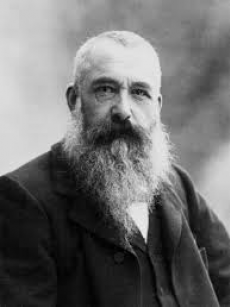
Email: emanuelealbertocirello.98@gmail.com
Total Article : 76
About Me:I am a Year 13 student which aspires to be an architect. I am interested in anything I don't yet know, and I mostly write about art, politics , Italian culture and inspirational people, although I will try to write for as many categories possible, just to test myself and get to know more things.

One of most beloved painters of all time for the delicacy and expressiveness light of his paintings, Claude Oscar Monet was born November 14, 1840 in Paris. Fledgling artist, he spent his childhood with his family in Le Havre, a city that he left at the age of fifteen to move in Paris, on the advice of the painter Boudin. The French capital was in fact also the capital of culture and it is natural that there the painter would find adequate stimuli to develop his ideas.
In Paris, he enrolled in the "Academie Suisse" where, in addition to studying the paintings of Delacroix, Corot and Daubigny, meets artists specializing in landscapes, like Pissarro, Bazille, Renoir and Sisley. Together they form a talented group and exchange ideas and cultural opinions, as well sharing moments of painting "live" in the forest of Fontainebleau.
He became very close with Bazille and, thanks to these, Monet finally finds a personal atelier, where elaborates some famous paintings, two of which were "The mouth of the Seine at Honfleur" and "Tip of the Cap de heve low tide", and were accepted in what became the famous "Salon des Refusés". Positive and clattering critics pushed the artist to start painting "Luncheon on the Grass".
In 1862, he worked with Bourdin and met Jongkind. In the autumn, he was back in Paris: joined the studio of Gleyre and met Renoir and Sisley. To these years the production of some landscapes of the surroundings of Honfleur are associated. In 1867 he painted "Women in the Garden", a key step in the impressionist research. From this point on, the impressionist influence became evident and the commitment to identify and painting nature, image and form, and to seize reality moment to moment became peculiar traits of his art.
In the works of the decade '70 -'80 during his period in London, he developed even further impressionist perception of the surrounding habitat. For example, "Breakfast", "The Bridge Argantuil" and the famous "Impression, Soleil Levant", which is extremely important, as he will later name the group of artists following this line of thought.
In 1874, he moved to Holland where he produced landscapes and views of Amsterdam. In the Impressionist exhibition of that year, Claude Monet has seven pastels and five paintings including "Field of Poppies".
After ten years, he presents the third exhibition of Les XX in Brussels with ten new paintings. The works were exhibited in America, and they got huge success. In April 1884, he returned to Holland to paint; from September to November he stayed in Belle-Ile-en-Mer in Brittany and created forty paintings that he only completed later in Giverny.
Here begins the series of "ponds". His international reputation grows: he exhibits in Paris, St. Petersburg, Moscow, New York, Dresden, and Boston.
In 1911, Durand-Ruel organizes the two solo exhibitions in New York. In the same year, he was diagnosed with a double cataract, but the eye operation is postponed. The eye problems worsen year by year. He fell ill with lung cancer in 1926. He died on December 5 of the same year in Giverny.
His style influenced the art of a whole generation and it still has relevance in contemporary art. His style is still admired today and it has a very intense influence on many artists. Claude Monet was the father of Impressionism, and he has influenced the contemporary art with the making of visions, not paintings. Monet’s art is intimate and emotional; his works do not just depict reality, but they depict his personal perception of the scenery. He broke the rules and ignored the canons set by the “Academie” and he has, ipso facto, changed art as it was known at the time and by creating the pathway for contemporary and modern art.
Image credits: https://upload.wikimedia.org/wikipedia/commons/a/a4/Claude_Monet_1899_Nadar_crop.jpg

0 Comment:
Be the first one to comment on this article.